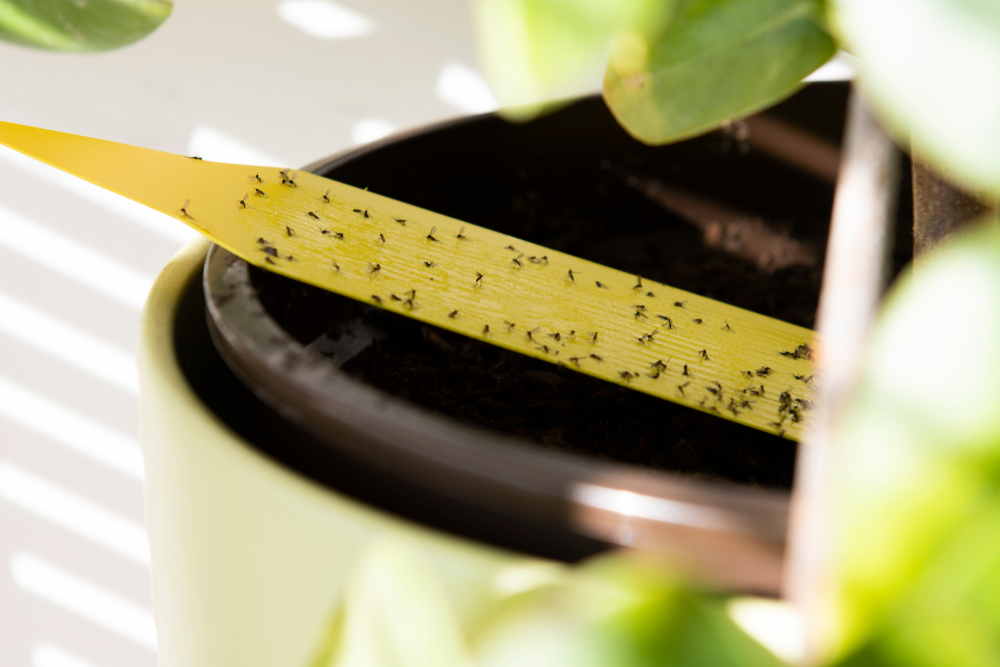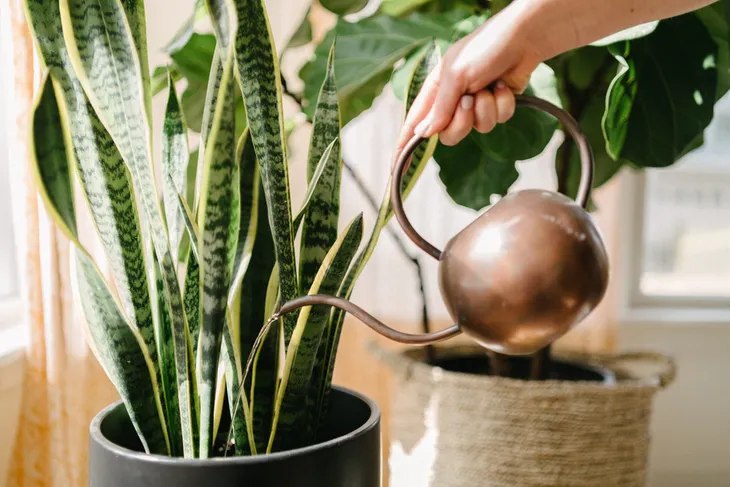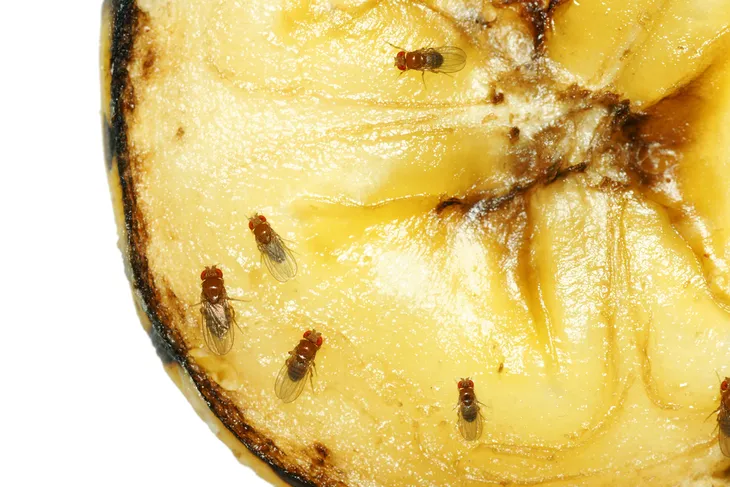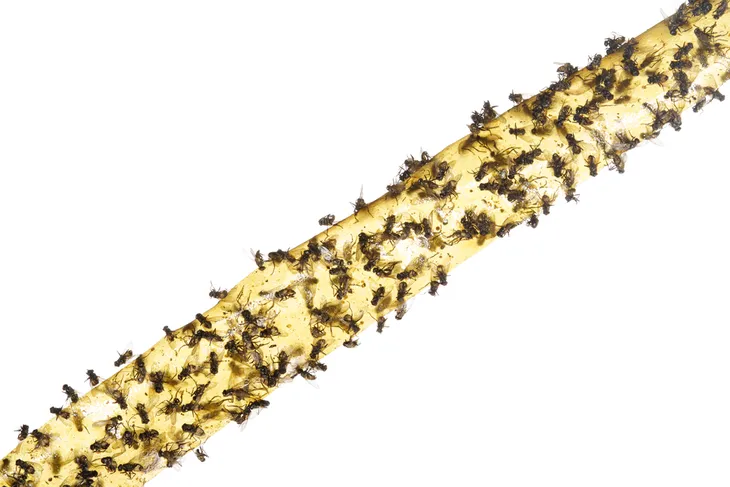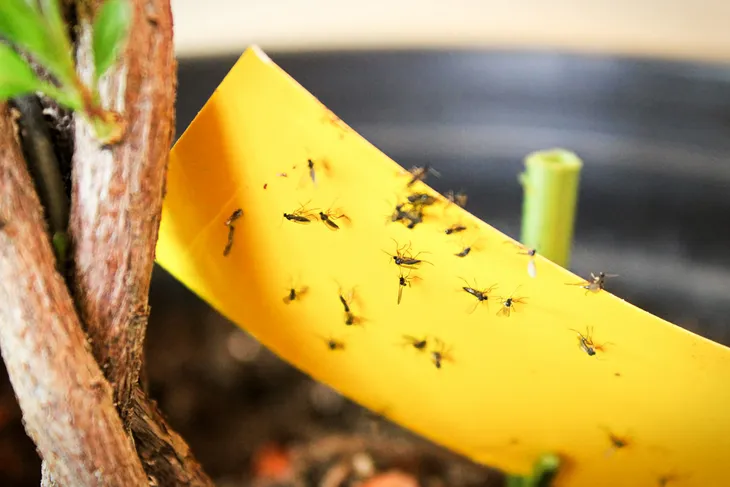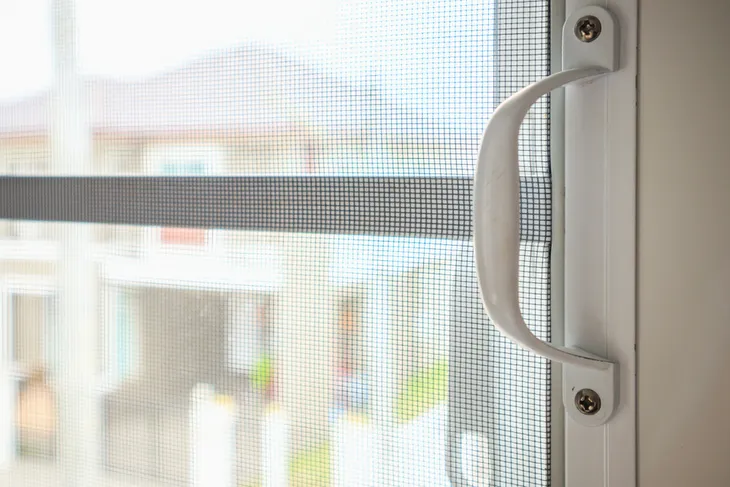They might be small, but they cause a big annoyance. While you can sometimes walk through swarms of them outside (don’t walk with your mouth open!), they can also make their way into your home if you have what they’re looking for. Adult gnats have a short lifespan, adding up to less than a couple of weeks, but they can continuously reproduce during that time. If they’ve made a home in your house, you’ll want to get rid of them before they have a chance to flourish.
While these pesky bugs are mostly just a nuisance, depending on the species of gnat, they can also cause damage by eating at the roots of your houseplants! Here are some useful tips to keep them out of your living spaces (and yard)…
Reduce Moisture in Houseplants
Better Homes and Gardens explains that fungus gnats like to lay their eggs in the soil of houseplants, where they eat the fungi that exist there. (As mentioned they can also chomp on the roots, leaving your houseplants looking sad and wilted).
One way to keep them out of your plants is to keep the moisture in the plant soil lower, without harming the plant. The source says that gnats seek out moist soil to lay their eggs, so try to overwater your plants (while also making sure drainage is adequate), it adds. Let the soil dry out a bit between watering, which will likely kill the eggs and larvae in there, it suggests.
Lure Gnats Into a Homemade Trap
This technique from PopularMechanics.com involves placing rotting fruit in a medium-sized bowl, then covering it with plastic wrap and poking many little holes in it using a toothpick or something similar. Once the little flyers climb inside, they won’t be able to climb back out, says the source.
The trap is actually specifically geared towards – you guessed it – fruit flies (which are similar in appearance but not the same as gnats), but apparently is still an effective way to deal with gnats, as some also love to munch on organic matter. Other sources suggest using a bit of apple cider vinegar in the trap instead to attract gnats.
Mix Up Your Solutions
Instead of building a trap that contains the flying pests, BobVila.com suggests taking another approach (that’s still a trap). Instead, this one involves collecting apple cider vinegar, sugar, dish soap, water, and an uncovered container.
The source says to mix about 2-tablespoons of the vinegar with 1-liter (about a quarter gallon) of water. Then add 1-tablespoon of sugar “and a few drops” of the dish soap to the solution and give it a mix. It notes that the gnats will be drawn to the scent, and when they land on it won’t be able to escape and drown. This trap is best used in the kitchen, it adds.
Try Fly Paper
While gnats are not exactly flies, some good ol’ fly paper should be able to do the trick, explains Country Living. The source notes, “There’s really no solution more trustworthy—or oddly satisfying—than fly paper.”
It suggests hanging the “ribbon” fly paper in your home’s high-traffic areas for gnats. You can also buy special adhesive fly paper that can actually cover the entire area of a window, it adds. (Flies tend to gather at the corners of windows with sun streaming through them).
Try Gnat Adhesives
You can find other similar products to fly paper that are specifically designed to catch fungus gnats in particular. Brands include “Gnat Stix” (and “Sticky Stiks“) that are sticky yellow traps that are placed near houseplants where adults lay their eggs, to attract them and trap them before they have the chance.
Better Homes and Gardens explains that while you should place Gnat Stix near the plants, you shouldn’t let them touch the leaves. Check in “every few days” to see how successful the traps have been, and replace the traps when they’ve become covered in gnats.
Hold a Candle To Them
Country Living has another idea for a trap “that seems almost too good (and easy, and old-school) to be true.” It says to put a tall candle into a supporting candlestick, and then carefully place it into a small pan that you’ve pre-filled with water.
It then says to turn off the lights, and simply wait until the gnats are drawn to the flame (it’s assumed you light the candle after placing it in the pan). The source explains the gnats will either get consumed by the hot flame, or fall to their demise in the water below. You shouldn’t leave a flame unattended, it warns – stay in the room during this experiment.
Zap Them
If you don’t want to use the candle trick, then you can go out and buy a device that will deliver similar results at night. There are different options for electric bug zappers – and they can be hung outside at a safe distance from where people will be sitting in your yard, roughly 5 to 8-feet off the ground.
But what if they’re already in your home and driving you nuts? There are some safe indoor options such as one from Katchy that attract bugs using a UV light, but traps them on a sticky glue board instead. There’s also the classic “tennis racket” style zapper popular at cottages that only activates when you hold down a button, which are sometimes approved for indoor use (be sure to double-check that for safety around kids and pets).
Screen Them at The Door
Of course, keeping gnats outside (and that includes checking plants to ensure they don’t have an infestation before bringing them inside) is ideal. You can ensure you have screens in outer doors and windows, but as Hunker.com points out, gnats can be small enough to slip through the holes.
The source suggests placing a small cup of apple cider vinegar by your screen door to get them before they get in. Other measures you can take it to replace the screens with tighter mesh, and to ensure there’s no damage to existing screens or weather stripping. Turn off lights near screened areas at night when you can to avoid attracting them, adds the source.
Keep Gnats Off Your Property
If you have gnats congregating in your home, then there’s a good chance your entire property is attractive to them. TodaysHomeowner.com explains steps you can take to make your yard less attractive to gnats, and that includes keeping your compost “as far from the house as you can,” while also covering trash cans.
Just like houseplants, if you have a gnat problem, avoid overwatering your outdoor plants and let the top layer dry out before hitting it with the hose again, it adds. If there are “naturally damp areas” in your yard try top dressing with about 1-inch of soil to cover them. Be sure to turn or rake your mulch occasionally to give it a chance to dry out and avoid mold buildup, adds the source.
